You have no items in your shopping cart.
0
You have no items in your shopping cart.
Span·sets - A lifting sling made from several wraps of natural polyester fiber covered by a double-wall tubular webbing that is sewn together at the ends. Often referred to as Polyester Round Slings, spansets have many practical uses in various fields involving rigging.
Spansets have been around for a very long time and have typically been used in the industrial rigging market. The slings themselves offer a magnificent strength-to-weight ratio compared to steel slings or chain. The ultra low stretch also plays a big role in their usability. At the working load limit of each spansets, they only stretch 3% of their length.
Another thing that makes spansets so effective is the way they are constructed. First, a single strand of natural polyester fiber is wrapped several times around the full length of the spanset, during which process it threads through a double-wall tubular webbing. Then the ends of the tubular webbing are stitched together. The double-wall tubular offers an extremely durable abrasion cover that protects the load bearing fibers within.
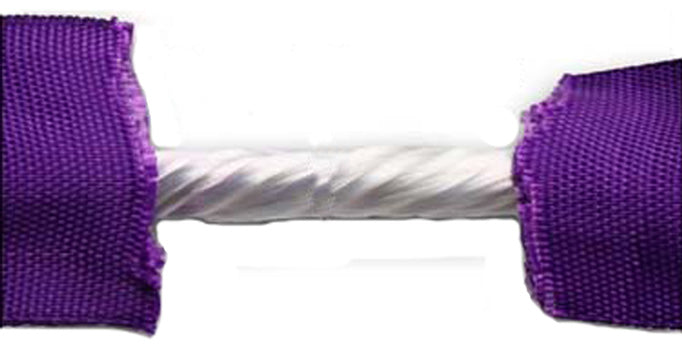
Now, how does all of this relate to slacklining? Well, spansets are considered to be the most bomb-proof sling out there for anchoring slacklines. Their high strength-to-weight ratio, supreme strength, ultra-high durability, and extremely low stretch make them superior slings for every type of slackline. Even the weakest of all the spansets out there (read: Purple Spansets) are more than strong enough for even the largest of slacklines.
Alright, enough with the salesman talk, now we can get into the good stuff. How are these slings used in slacklining? What are their limitations? What do all the ratings on the slings mean? I will answer all these questions below.
Spansets are used in many different ways in slacklining. The most common use is probably anchoring tricklines and longlines. Both of these forms of slacklining require a TON of force to be put on your line, thus the need for ultra strong anchor slings. The way these slings are rated, nearly double the vertical strength of the slings can be achieved by simply wrapping them around the tree and connecting the ends with a shackle (more later).
Spansets can also be used to construct highline anchors. Up to 4 bolts can be equalized using the sliding-x configuration (whole other article) with a spanset. It becomes too much of a hassle to use spansets on any anchor that requires more than 4 bolts.
Basically, any time that you need an absolutely bomb-proof anchor for your slackline, you should be using spansets.
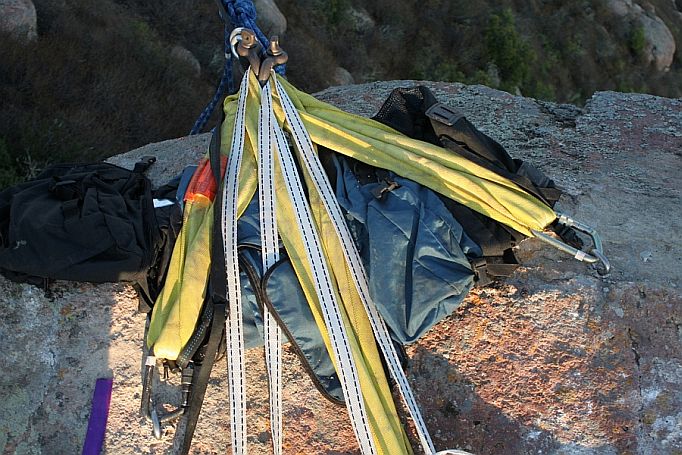
There are a few drawbacks to using spansets. One is that they are all a set length. When you purchase a spansets, you are asked to choose a length. This length is something that you cannot change about the spanset, it is fixed. That means that if you have an object that is larger than your spanset that you need to wrap, then you will either need to get a bigger spanset, or connect two together with a girth hitch (or some other form of connection). This can be a major drawback if you use a large variety of sized anchors because you will need a large number of spansets to accommodate all these sizes.
Note: the length of spansets is measured from end to end when laid flat, not the circumference. Please see picture below for a better idea.
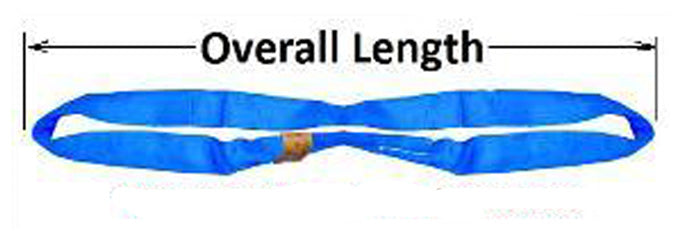
Another drawback of spansets is they tend to be quite heavy, especially the larger sized ones. This can be a problem when doing highlines with long approaches. This can be reduced by sticking with the Purple-size Spansets.
If you have ever seen a spanset, you have probably noticed that they all have tags sewn onto them with various informative details about the sling. This tag is very important as it contains all the strength properties of the sling. There are a few key things that are missing from these tags that is often overlooked when rigging with spansets.
The basic tag on a spanset will look like this:

The code on the sling refers to the kind of sling that it is. On this particular spanset, OL1 means that it's the purple size spanset. The date refers to the date that the sling was manufactured. The length on the far right refers to the length of the spanset, measured end-to-end (see above). Then the three numbers on the bottom of the tag refer to the strength of the spanset for various rigging situations. The number on the bottom left is the strength for vertical pull. This refers to using the sling end-to-end and pulling straight along the length of the sling. For us slackliners, this is the least common way we use spansets. The second number refers to the strength of the sling in choker configuration, which is basically a girth hitch. You may use this on a tree where you don't want to have tri-loading on your anchor connection. The third number refers to using the sling in a 90-degree basket configuration. Oftentimes slackliners will refer to wrapping the tree with a spanset as a basket hitch, but this is not an entirely accurate description. Wrapping a tree with a spanset and connecting both ends to a shackle or some other connection device creates an angle in the sling. This angle causes increased loads in the legs of the sling, which when added together are larger than the total load at the master-point of the sling. For this reason, the rating is not quite the same as a true basket hitch. Here are a few photos to demonstrate the concept:
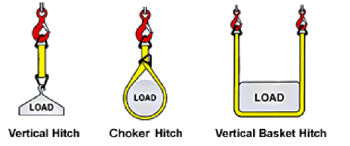
| Angles in Degree | Force Factor |
|---|---|
| 90 | 1.000 |
| 85 | 0.996 |
| 80 | 0.985 |
| 75 | 0.966 |
| 70 | 0.940 |
| 65 | 0.906 |
| 60 | 0.866 |
| 55 | 0.819 |
| 50 | 0.766 |
| 45 | 0.707 |
| 40 | 0.643 |
| 35 | 0.574 |
| 30 | 0.500 |
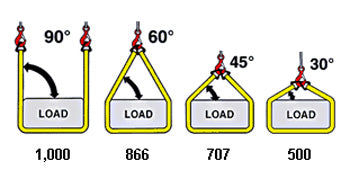
Note: The above assumes that the sling has a strength of 500 lbs. In a true basket hitch with a 90-degree angle, the sling can hold a 1,000 lb load. In a basket hitch with a 30-degree angle, the sling can hold a 500 lb load. To find how much your sling can hold with a certain angle, find the angle in the above chart and multiply the factor corresponding to that angle by the basket rating of your sling.
This is why it's very important to watch the angles that you are experiencing in your rig when using any sort of sling. The smaller the angle at the load, the larger the forces are in your sling. Here is a fairly comprehensive chart showing various rigging conditions and the strength of the spanset when used in the respective configurations:
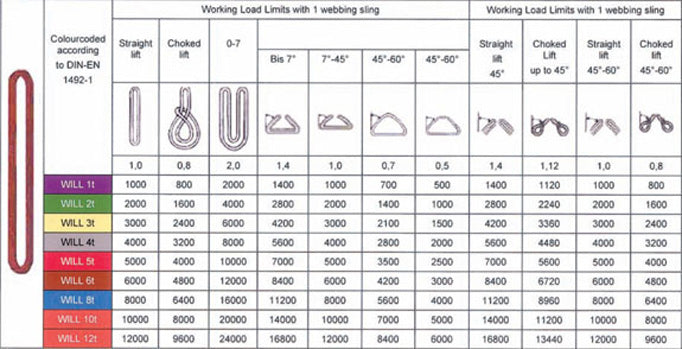
Note: The above ratings are all in kilograms-force (kgf). Multiply the numbers by 2.2 to find the strength in pounds-force (lbf).
This concludes our article on spansets. If you have any questions or comments, please ask them below in the comments section and we will do our best to answer in as much detail as possible. Thanks for reading!
| Product | Price | Quantity | Options | |||||
|---|---|---|---|---|---|---|---|---|
| Features |
| Availability: |
| Price |
| Options |
| Actions |

← Older Post Newer Post →
1 comment
How much strength do round slings lose if they are girth hitched, for example, trying to wrap a large tree with two 6’ slings instead of a 12’ sling?